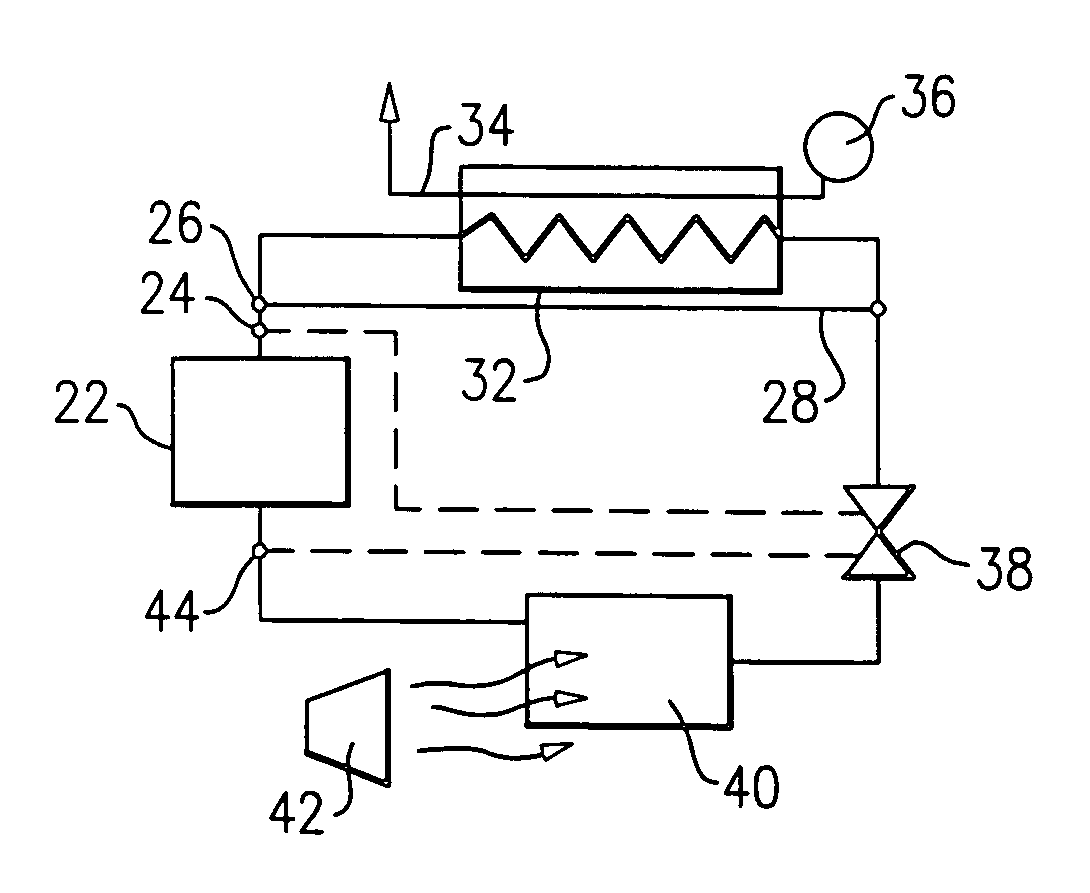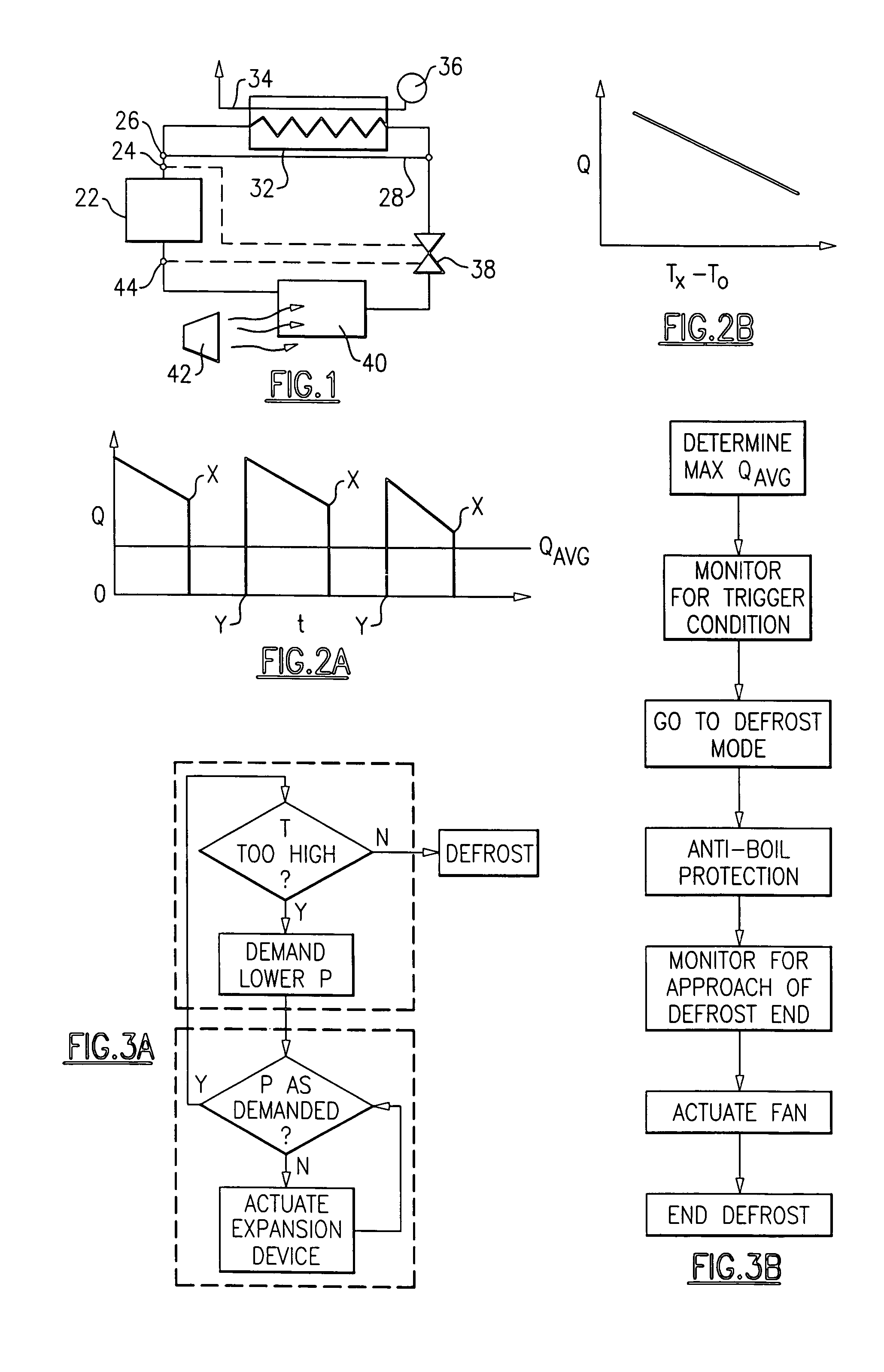Defrost mode for HVAC heat pump systems
a heat pump and defrost mode technology, applied in the direction of defrosting, domestic cooling apparatus, etc., can solve the problems of unduly high temperature of refrigerant leaving the evaporator, problems elsewhere in the system, etc., to prolong the life of the circuit components, avoid the effect of smoother transition and abrupt pressure variation
- Summary
- Abstract
- Description
- Claims
- Application Information
AI Technical Summary
Benefits of technology
Problems solved by technology
Method used
Image
Examples
Embodiment Construction
[0017]A heat pump cycle 20 is illustrated schematically in FIG. 1. As known, a compressor 22 compresses a refrigerant and discharges the refrigerant downstream toward heat exchanger 32. As shown, a sensor 24 is positioned on this downstream line. Further, a valve 26 selectively allows the flow into a bypass line 28, which will bypass a portion of the refrigerant to a downstream point 30, bypassing the heat exchanger 32. Bypass line 28 is optional, and is a component to provide a defrost function as will be explained below. A hot water line 34 passes in heat exchange relationship with the refrigerant in the heat exchanger 32. A hot water pump 36 drives the flow of the water through the heat exchanger 32.
[0018]An expansion device 38 is positioned downstream of the heat exchanger 32, and an evaporator 40 is downstream of the expansion device 38. Typically, the evaporator 40 includes heat transfer coils. A fan 42 blows air over the evaporator 40 to heat the refrigerant in the evaporator...
PUM
 Login to View More
Login to View More Abstract
Description
Claims
Application Information
 Login to View More
Login to View More - R&D
- Intellectual Property
- Life Sciences
- Materials
- Tech Scout
- Unparalleled Data Quality
- Higher Quality Content
- 60% Fewer Hallucinations
Browse by: Latest US Patents, China's latest patents, Technical Efficacy Thesaurus, Application Domain, Technology Topic, Popular Technical Reports.
© 2025 PatSnap. All rights reserved.Legal|Privacy policy|Modern Slavery Act Transparency Statement|Sitemap|About US| Contact US: help@patsnap.com


